Taxonomy
Taxonomy Definition
Taxonomy is the branch of biology that classifies all living things. It was developed by the Swedish botanist Carolus Linnaeus, who lived during the 18th Century, and his system of classification is still used today. Linnaeus invented binomial nomenclature, the system of giving each type of organism a genus and species name. The Father of taxonomy was Carolus Linnaeus. He also developed a classification system called the taxonomic hierarchy, which today has eight ranks from general to specific: domain, kingdom, phylum, class, order, family, genus, and species.
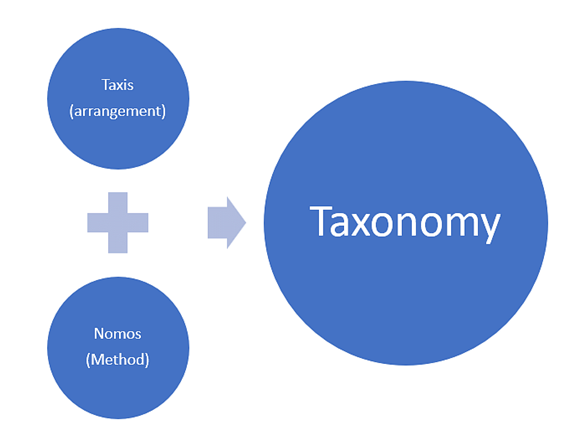
The Taxonomic Hierarchy
A taxon (plural: taxa) is a group of organisms that are classified as a unit. This can be specific or general. The hierarchy has two categories i.e., obligate and intermediate. Obligate is the one that is followed strictly and ranges from kingdom to species. Intermediate is not observed strictly and they. Also, they are added to the obligate lists like subdivision, superfamily, superclass, suborder, subspecies etc.
The following is a brief description of the taxonomic ranks of the taxonomic hierarchy.
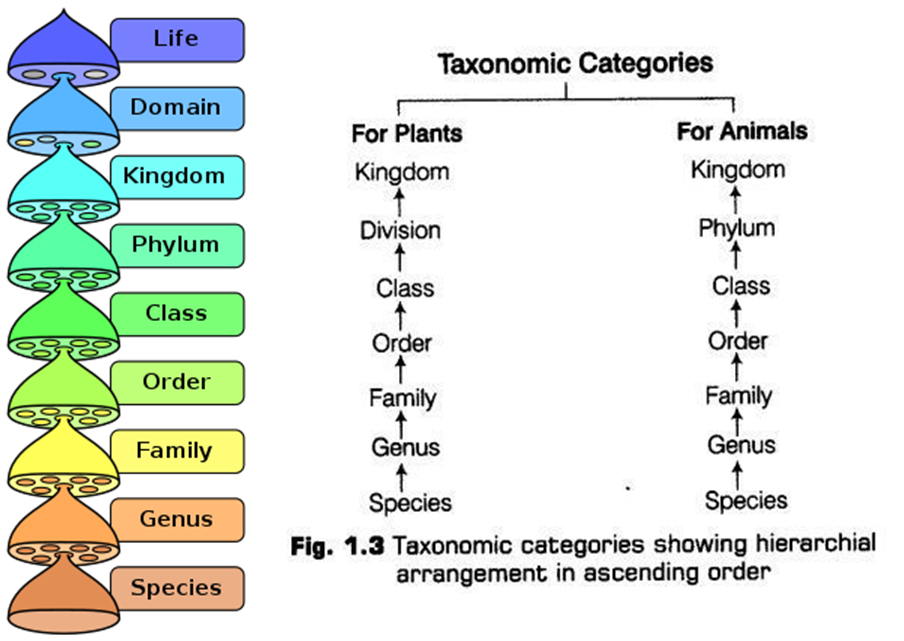
Domain
A domain is the highest (most general) rank of organisms. Linnaeus did invent some of the taxonomic ranks, but he did not invent the domain rank, which is relatively new. The term domain wasn’t used until 1990, over 250 years after Linnaeus developed his classification system in 1735.
The three-domain system of Carl Woese, introduced in 1990, with top-level groupings of Archaea, Bacteria, and Eukaryota domains.
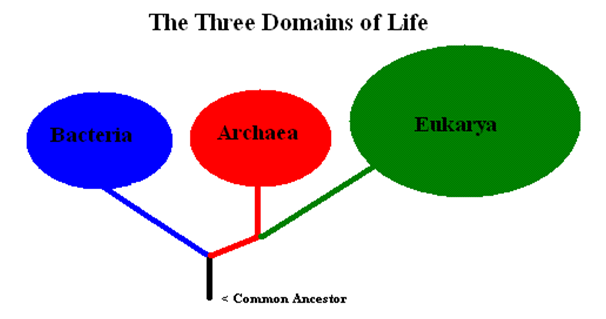
Kingdom
Before domains were introduced, the kingdom was the highest taxonomic rank. In the past, the different kingdoms were Animalia, Plantae, Fungi, Protista, Archaea, and Bacteria (Archaea and Bacteria were sometimes grouped into one kingdom, Monera)
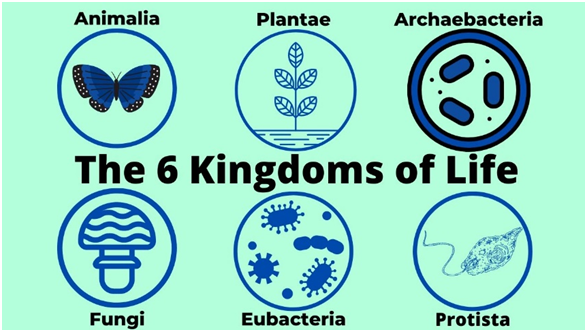
Phylum
Phylum (plural: phyla) is the next rank after kingdom; it is more specific than kingdom but less specific than class. There are 35 phyla in the kingdom Animalia, including Chordata (all organisms with a dorsal nerve cord), Porifera (sponges), and Arthropoda (arthropods).
Class
Class was the most general rank proposed by Linnaeus; phyla were not introduced until the 19th Century. There are 108 different classes in the kingdom Animalia, including Mammalia (mammals), Aves (birds), and Reptilia (reptiles), among many others.
Order
Order is more specific than class. Some of Linnaeus’ orders are still used today, such as Lepidoptera (the order of butterflies and moths). There are between 19-26 orders of Mammalia, depending on how organisms are classified—sources differ.
Genus
Genus (plural: genera) is even more specific than family. It is the first part of an organism’s scientific name using binomial nomenclature; the second part is the species name. An organism’s scientific name is always italicized, and the genus name is capitalized while the species name is not. Genus and species are the only taxonomic ranks that are italicized. The scientific name for humans is Homo sapiens. Homo is the genus name, while sapiens is the species name.
Species
Species are the most specific major taxonomic rank; species are sometimes divided into subspecies, but not all species have multiple forms that are different enough to be called subspecies. There are an estimated 8.7 million different species of organisms on Earth, While each genus name is unique, the same species names can be used for different organisms. For example, Ursus americanus is the American black bear, while Bufo americanus is the American toad.
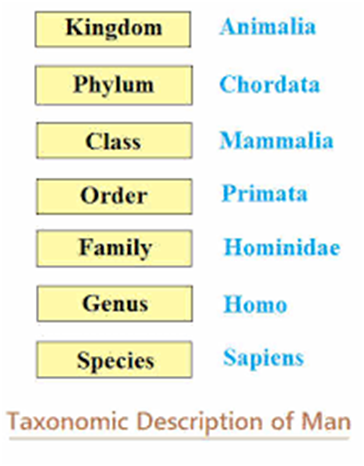

 ACME SMART PUBLICATION
ACME SMART PUBLICATION
